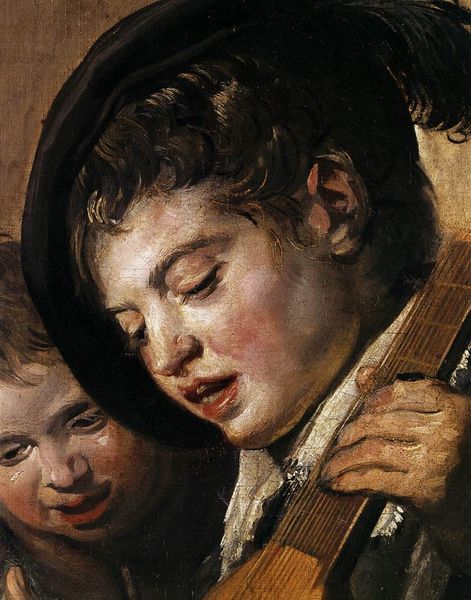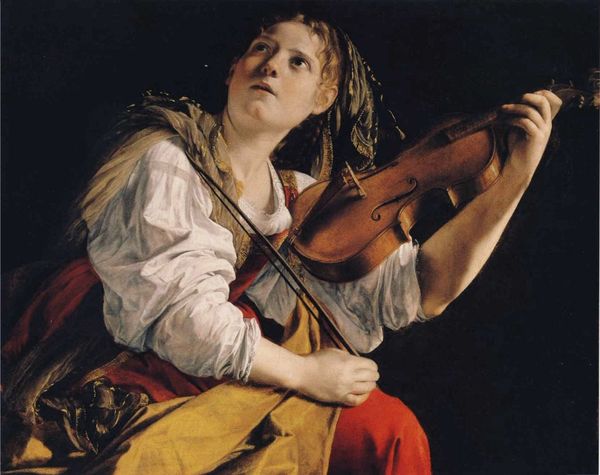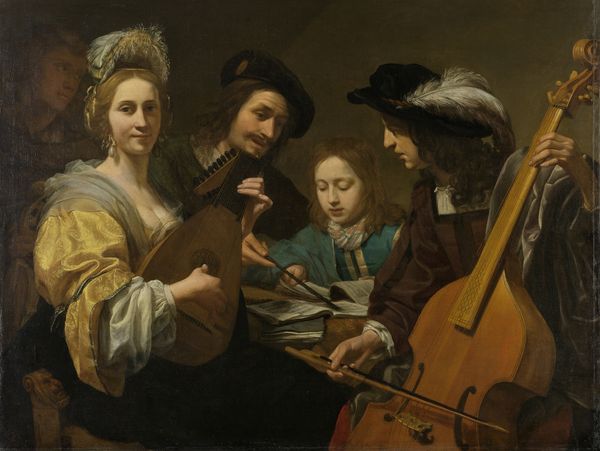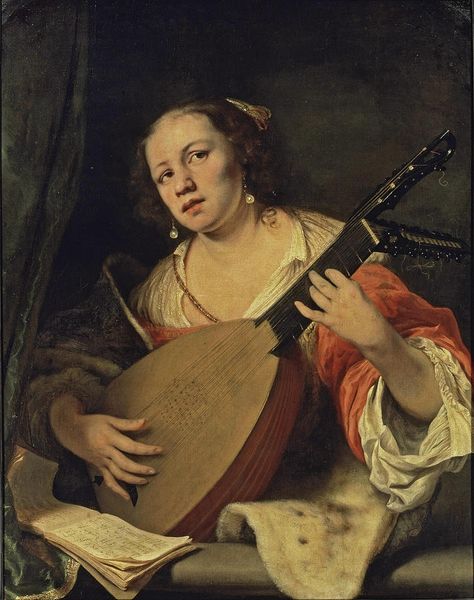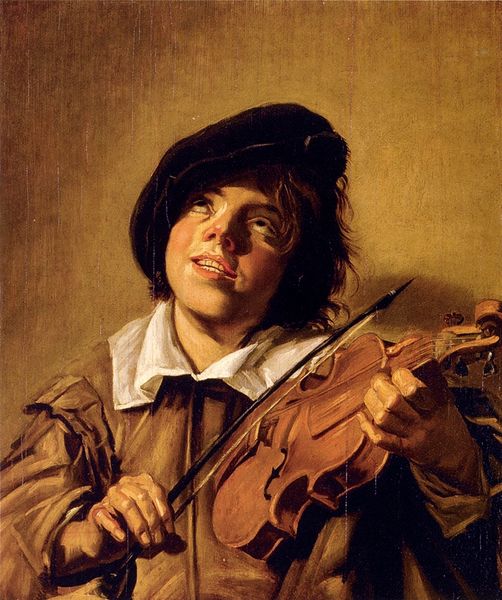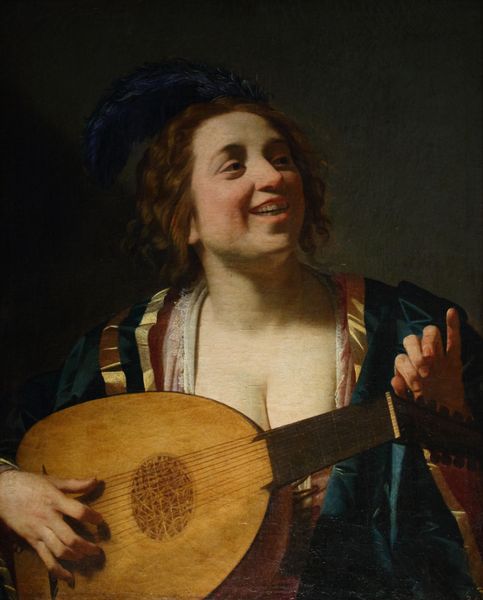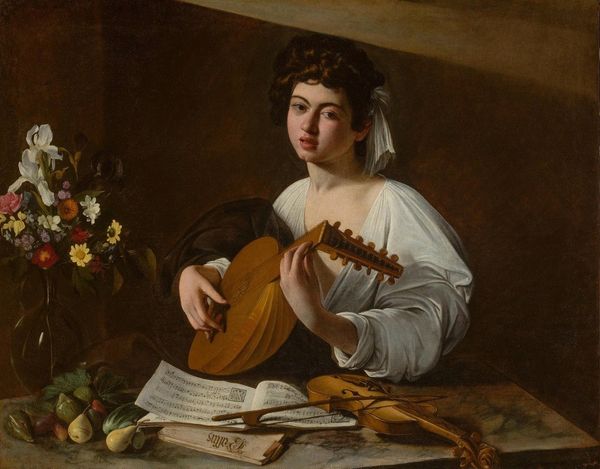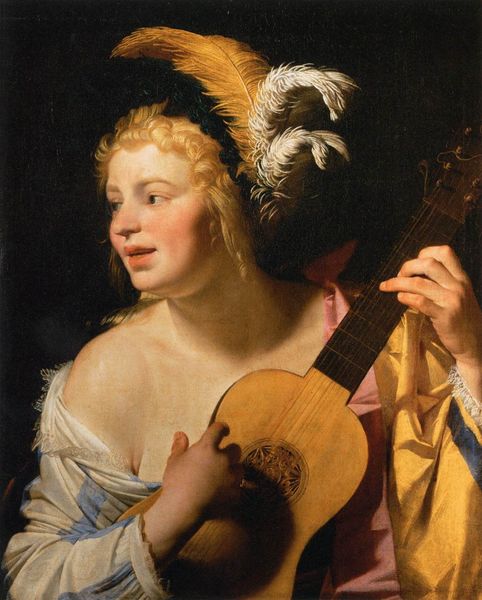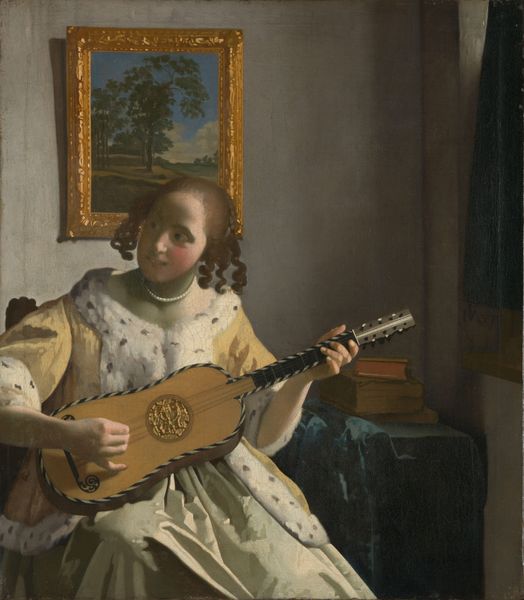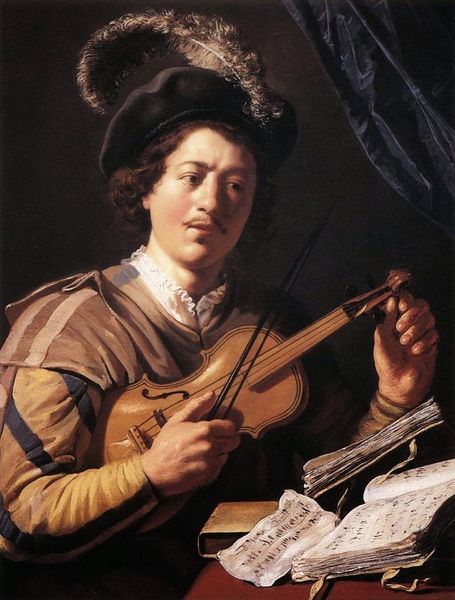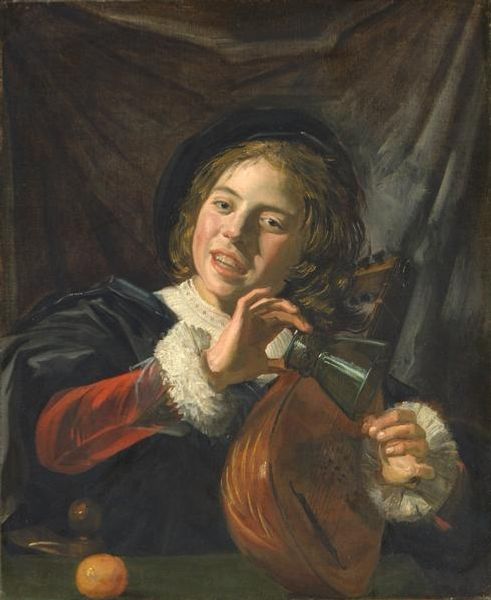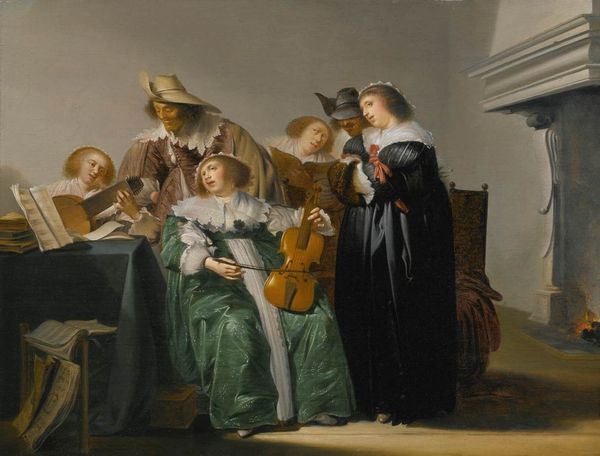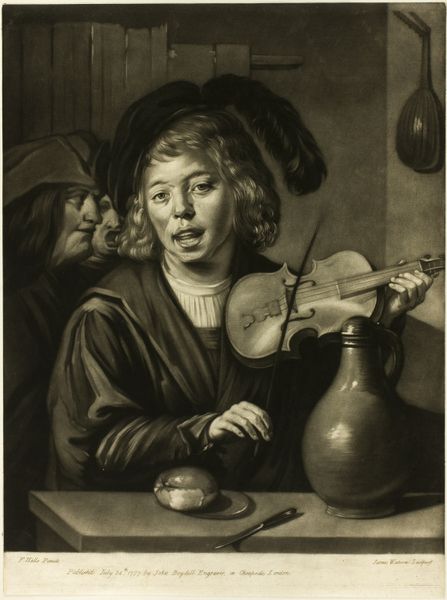
oil-paint
#
portrait
#
baroque
#
oil-paint
#
charcoal drawing
#
oil painting
#
group-portraits
#
genre-painting
Dimensions: 66.8 x 52.1 cm
Copyright: Public domain
Curator: We are looking at Frans Hals’ “Two Boys Singing,” an oil on canvas completed around 1625. Editor: The painting's atmosphere immediately strikes me as incredibly intimate and vibrant, despite its subdued palette. There is a sense of spontaneous joy, capturing a fleeting moment in time. Curator: The composition reinforces this immediacy. The two figures are tightly cropped, almost spilling out of the frame. This, coupled with the rough brushstrokes, gives the impression that we're intruding on a private moment. Hals’ use of impasto here adds depth and texture, especially to the faces and hands, further enhancing the realism. Editor: Absolutely. The unidealized portrayal of these young men is important to note. While their attire may indicate some level of privilege, the loose collars and disheveled hair suggest a rebellious youthfulness challenging the rigid social structures of the time. Music often served as a powerful tool for expressing dissenting views. Curator: Perhaps, though the focus remains on the purely visual relationships. Note how the lute, as the focal point, acts as a formal bridge connecting the figures through tonal variations in the instrument itself and its proximity to the notes laid before the boys. Semiotically, music in painting implies harmony but formally we are analyzing the relations on the canvas first and foremost. Editor: But how can we divorce the symbolic power of music and communal song from its material function here? I believe these boys challenge viewers to engage with youth and the disruption of expectations, rather than upholding order through formal constraint. Even Hals' painting technique, its visible, loose brushwork, represents a shift away from idealized form to represent human movement. Curator: Well, irrespective of what each figure represents socially, I appreciate Hals’ painterly treatment that contributes significantly to the Baroque sensibility and its dramatic appeal. Editor: And it is a vital expression of youth breaking convention during the Baroque period, even still.
Comments
No comments
Be the first to comment and join the conversation on the ultimate creative platform.
